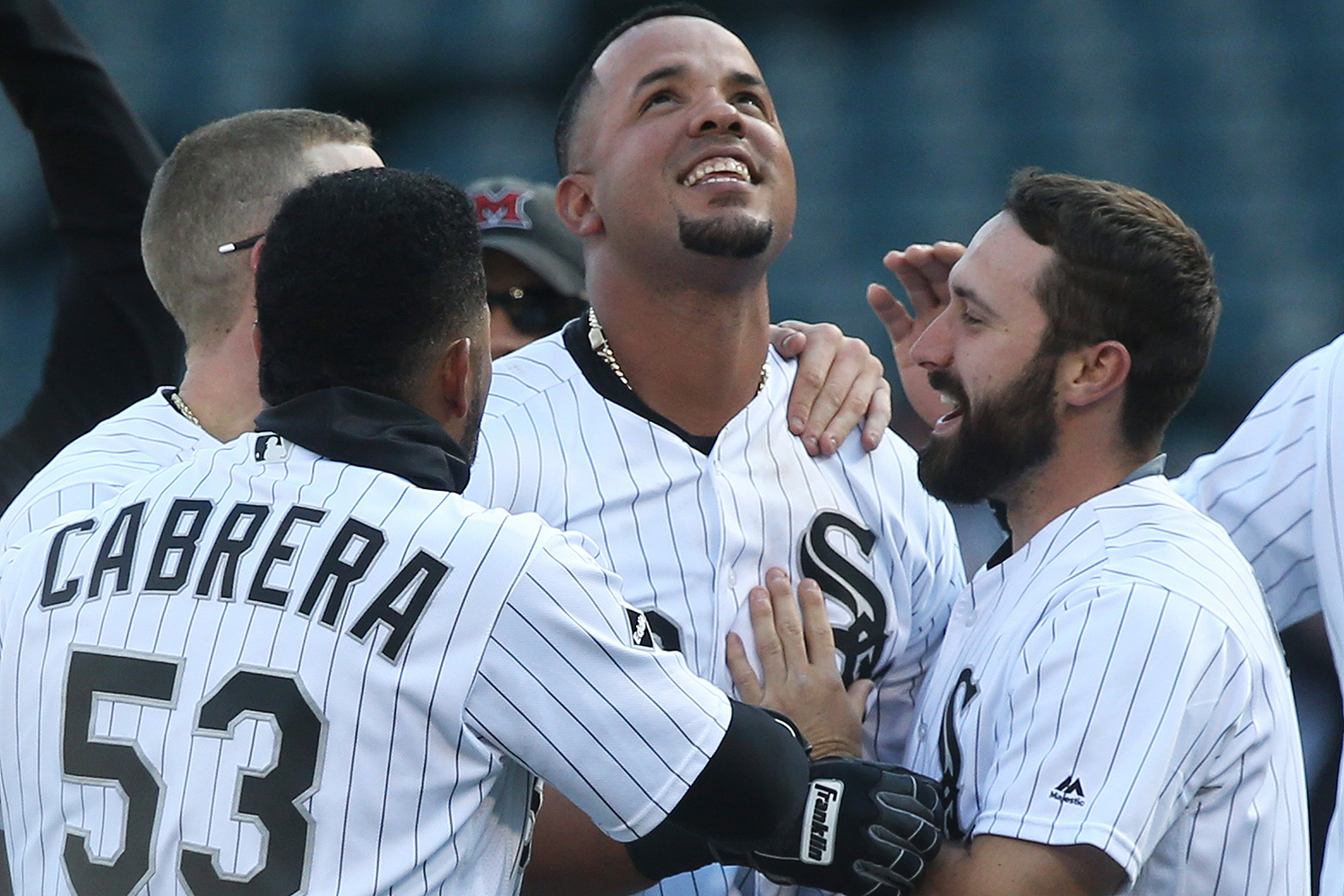Coming into the 2016 season, the Cubs were the consensus best team in baseball. About an eighth of the way into the season… the Cubs are the best team in baseball. They have the best winning percentage (.762), and the best run differential at 3.5 runs per game, a full one and a half runs above the second-place—wait for it—Cardinals.
But the second-best team, by winning percentage at least, is the White Sox, which no one expected. I was even a bit surprised when ESPN's Christina Kahrl told me that she wouldn't count them out of the playoff race; they did, after all, finish 10 games below .500 last year, and while their offseason moves were clever and efficient, they weren't in the market for top names. Todd Frazier is a good player and a vast improvement over the team's decade-long disaster at third base, and Brett Lawrie and Mat Latos were inexpensive fliers—modest bets on players who have been good in the past.
If you're going to follow the White Sox's strategy of never truly rebuilding—and with a small core of genuinely elite talent in Sale, Abreu, and Eaton, reloading was a defensible approach—the team did fine.
But they're 16-7! Per Owen Watson at Fangraphs, they've doubled their odds of reaching the playoffs, from 26 percent at the beginning of the season to 54 percent, as Cleveland's odds have fallen from 70 percent to 63 percent. Is it for real?
Watson flags something important to suggest it is:
That’s the White Sox with the best team ERA in the American League. That’s also the White Sox with the best team FIP in the American League. The rotation and bullpen has been a top-four combination for almost the entire first month of the season, and it starts with early Cy Young Award-favorite Chris Sale and second-in-command Jose Quintana.
FIP stands for "fielding independent pitching"; it's one way of trying to figure out if a team's ERA might be very low due to luck. And the White Sox's ERA probably is so low (2.55) due to luck, but if their FIP is still the best in the AL, that goes some way toward suggesting their good pitching might be sustainable.
And their pitching is definitely going to get worse than it is now.
Chris Sale. For instance, he has a .186 average on balls in play in 2016; his career average is .289. Some of those balls in play are going to start falling for hits.
Jose Quintana. His home run to fly ball ratio is 0.0%. Because he hasn't given up a home run in five starts. His career average is 0.73 home runs per nine innings, so he's due. Like Sale, he's also great, he's just not going to have a 1.47 ERA all season.
Mat Latos. Where to begin? He has a 0.75 ERA, which is amazing. He is also striking out fewer than five batters per nine innings (which is terrible) and walking about two and a half batters per nine innings (which isn't great). He's stranded 97 percent of runners (which is preposterous) and his BABIP is .167 (batting average on balls in play—which is 100 points off his career average). Regression is lurking like a serial killer in a bad horror movie. He still looks like a great acquisition, since the Sox couldn't have expected more than a fourth starter, but don't say you weren't warned.
John Danks. The other amazing thing about the White Sox's 16-7 record is that four of the losses have come in four John Danks starts, in which he gave up six, two, five, and five earned runs. He's not that bad a pitcher, but he hasn't had an ERA under four since 2010. He was a bottom-10 starter by ERA in 2015 and 2014, and would have been in 2013 if he'd qualified. The good news is that if the Sox can stay competitive in a mediocre AL Central and Latos stays decent, all they need is a respectable fifth starter. The bad news is that Danks might not even be that.
On the other side of the field, the news is pretty good. Fangraphs has the White Sox's position players ranked 14th in baseball with 2.5 wins above replacement, which is a vast improvement over last year, when they were worst in baseball with… 3.3 WAR. Since WAR is a cumulative statistic, this means their position players have provided almost as much value in their first 23 games as in all of last season.
And for every bit of it that seems driven by luck (Brett Lawrie's unsustainable .382 BABIP), there's something that seems like it will get better (Jose Abreu's .207 average and .290 on-base percentage). Melky Cabrera will probably not keep a .380 on-base percentage (he's walking more than he strikes out), but Todd Frazier's will probably not stay below .300.
Watson titled his post "The White Sox Have Gotten the Start They Needed." He's right—they're probably not this good, but it's given them a good cushion. Regression is going to mean some things are going to get worse, but some things will probably get better, too. And when everything normalizes and we see the Sox for what they actually are, they could just be a couple modest pieces away from making a surprising run in 2016.



